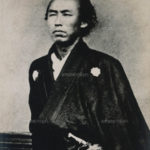The “Blame” of Western Civilization: in my book, The War in Ukraine as Revenge
The idea of placing the feather or small image of “Maat,” the Egyptian incarnation of justice and truth (Maat is usually said to be the daughter of the sun god Re), and the heart of the dead on the balance, then leads to the question of the “apportionment” of justice by the Greek goddess Themis (the Titan goddess, daughter of Uranus [heaven] and Gaia [earth]) and her daughter (Dike).
Themis becomes the second wife of Deus when the Olympic gods become dominant, giving birth to Horai (Seasons), Moirai (Fates), Eunomia (Order), Dike (Justice), and Eirene (Peace). Themis is also said to have been Zeus’ advisor in terms of what he should do and what he should leave behind. Like Themis, Dike serves as advisor to Zeus, informing him of all human actions and observing them carefully. “Mythology and the Images of Justice” by Jacques de Ville (https://core.ac.uk/download/pdf/62633074.pdf), explains that “her task, in this respect, imposed by Zeus, is to preserve, guard, and maintain the law” and explains that “Dike does not exercise any power herself” and that “in a case where the law is disregarded, it falls upon Zeus to punish, to avenge, or to retaliate.” However, “in later mythology, the dark side of Dike’s divinity was gradually emphasized, and the previously sharp distinction between Themis and Dike gradually began to merge,” resulting in the image of Dike herself as the one to do it. This may have led to the image of the goddess holding a balance in her left hand and a sword in her right.
The Roman goddess Justitia, unlike Maat, Themis, and Dike, is not among the major deities. Ville points out that no images of Justitia from Roman times have remained, and where mention is made of sculptures, the latter appear to show some correspondence with Dike and Nemesis and to be of Greek rather than Roman origin. Justitia becomes one of the virtues of Christianity and fights against vice. It fosters an image of justice and balance, as well as an association with the sword.
On the other hand, from about the 12th century, the archangel Michael, standing next to Christ, began to take on the role of weighing the human soul. Around the 13th century, we also begin to see images of Michael dividing the dead into good and evil and punishing them.
Ville writes, “From around the sixteenth century, the archangel Michael is depicted on his own as angel of justice and judgment, with a sword and scales in association with the last judgment.” It is interesting to note that the sword held by Justitia became a symbol of the secular power that sought to establish the independent jurisdiction of the state over the church, and “the (secular) Justitia with sword and scales now stood over against the (spiritual) archangel Michael, himself with sword and scale.”
The blindfold of Justitia first appears in a woodcut painted by Albrecht Dürer in 1494. It is said to be intended to show that blindfolds do not conceal the truth or prevent the realization of justice.
In any case, behind the powerful metaphor of justice as a balance, with blindfolded figures moving the scales evenly in their hands, grows a kind of belief that takes for granted the need for order based on negative reciprocity.
Punishment is affirmed in the form of retribution against the offender, not to mention reparation comparable to the loss incurred. The view of Christ’s death as restoring the wholeness disturbed by our violation of the moral order (“sin”) leads to “the belief that only by atoning for sin can we avoid divine retribution,” and the “atonement for violence” of “violent sacrifice” is embodied in the penal system. This leads to the institutionalization of punishment as “atonement for violence against violence,” which is accompanied by “violence. While this appears to be a transformation of vengeance into punishment, in reality vengeance continues to burn in the collective “unconscious.
Get rid of the image of the balance.
In this light, it seems that the image of the balance itself is problematic. Christensen, who has been quoted many times in this book, takes the position that revenge is morally wrong, whether it be revenge by an individual or by a collective as a “proxy” or “indirect” agent.
As for private revenge, he argues that revenge is neither morally imperative nor morally permissible. Christensen believes that there is always a morally superior choice to revenge as a response to unjust harm, and that there is reason to conclude that vindictiveness (or obsession) is a vice, not a virtue. Furthermore, revenge is never permissible for the group, he said. As already mentioned, the desire for revenge is always personal, so the group, an organization that is not a person itself, will never take revenge itself. However, it is possible for group members to fight a war with a vengeful spirit. This means a situation in which the entire group is inclined to take revenge, guided by a kind of collective “unconscious,” so to speak.
Christensen distinguishes three types of retaliatory violence as intentional violence: (1) violence to defend against aggressive violence and prevent further attacks, (2) violence to punish norm violators, and (3) violence for revenge. Revenge here is the intentional infliction of retaliatory harm on someone so that the avenger or his or her agent can feel better about himself or herself; “That is, vengeful action has as its aim the achievement of feelings of satisfaction on the part of those perceived to have been victimized by wrongful harm themselves, and/or on the part of their champions, by means of inflicting suffering, in return on the victimizers and/or those affiliated with them.” From these premises, Christensen asks, “what can we conclude about the morality of revenge as an activity of intentional violence both aimed at, and on behalf of, either individuals or group?”
The answer is, first, that revenge cannot be morally imperative for any agent in a situation where the option to deal with wrongful harm is left to authorized judicial authorities, even in light of the possibility that the authorized authorities may be wrong and that the victim may not be satisfied with the legal judgment rendered. Second, an act of revenge is morally wrong if another avenue is open to the injured party to properly achieve personal redress by alleviating the continuing vulnerable fear along with compensation (for example, in the case of property loss) or restoration of self-worth (for example, in the case of physical assault or psychological distress). He further noted, “To generalize then, if we agree that intentional violence against another (whenever it is on the continuum of injury) is morally wrong unless there is a good enough reason for it, I would say that there is never a good enough reason for revenge, and thus as a choice of action it is always the wrong one.”
I do not wish to dispute Christensen’s assertion. However, I would like to point out here that the American theologian, Hastings Rashdall, in his book, The Idea of Atonement in Christian Theology (https://macsphere.mcmaster.ca/bitstream/11375/14785/1/fulltext.pdf), ” Punishment undoubtedly originated in the instinct of revenge” (p. 422). He points out that “with the progress of morality it was recognized that this instinct should be controlled by a rational principle, but there still lingered the notion that, when authorized and entitled to punish for real wrong-doing, the just ruler ought still to punish, as primitive man in his anger had punished, as though vengeance or punishment were an end in itself.” Hence, “to my own mind the retributive theory is at bottom a survival of primitive modes of thought,” Rashdall writes. However, “Punishment undoubtedly originated in the instinct of revenge.” is not an accurate statement. As pointed out in this book, there is a difference between revenge and the desire for revenge. The latter may be instinctive, but the act of revenge is not instinctive. That is why, as Freud says, we cannot overlook the fact that civilization is built on the abandonment of instinct, and how much civilization presupposes dissatisfaction (by suppression, repression, or other means) of the very powerful instinct, in order to guarantee justice, the first necessary condition of civilization, and we must not notice that the very civilization that is trying to repress even the spirit of revenge We must realize that the problem lies with civilization itself, which is trying to suppress even the desire for vengeance.
Revenge and Forgiveness
The question is how to face this reality. It again raises the issue of revenge and forgiveness. I introduced this issue in Chapter 2, Section 2, in the book Between Vengeance and Forgiveness: Feminist Responses to Violent Injustice by Martha Minow. I would therefore like to explain Minow’s argument a little more carefully.
She discusses collective violence, noting that “mass killings are the fruit of revenge for perceived past harms.” One way to avoid the spread of such violence is to ” transfer the responsibilities for apportioning blame and punishment from victims to public bodies acting according to the rule of law.” In other words, the intervention of someone other than the victim attempts to eliminate personal animosity through retribution, which can be understood as revenge, restrained by the principle of proportionality and the principle of individual rights. Minow notes that “this is an attempt to remove personal animus, though not necessarily to excise vengeance. Tame it, balance it, recast it as the retributive dimension of public punishment.”
But can the instinct for revenge be suppressed in the face of mass violence, genocide, and atrocities? Perhaps the instinct for revenge is an instinct, and it cannot be suppressed. But revenge is an act, and this one, in truth, is controllable. But it must be admitted that up to now, genocide has been repeated as a repetition of revenge.
Forgiveness may be necessary to break this cycle of violence, Minow argues. Instead of taking revenge and becoming a new victim, he indicates that “the victim should not seek revenge and become a new victimizer but instead should forgive the offender and end the cycle of offense.” Forgiveness allows us to let go of resentment, to avoid the self-destructive effects of holding on to pain, resentment, and victimhood, to heal grief, to forge new constructive alliances, and to break the cycle of violence.
Because of the variety of cases, it is difficult to develop generalizations. Having confirmed this, the first thing that can be pointed out is that individuals who are able to forgive others who have hurt them or their loved ones should be commended for this difficult decision. It must be noted then that forgiveness is a power that the victim has, not a right that is claimed. Fundamentally, forgiveness cannot be commanded. Neither friends, clergy, nor officials can force others to grant forgiveness to the perpetrator. A victim contemplating forgiveness must evoke a deep sense of compassion, benevolence, love, or some other flaw common to all human beings, victim and perpetrator alike. Therefore, the leniency of an institution such as the government toward the offender, in the form of immunity or amnesty, can be an outrage that forces the victim into oblivion. Governmental forgiveness, which implies immunity from punishment, would contain vengeance, and indeed the communal response that justice demands, i.e., the acknowledgement of the perpetration.
Trying to separate the traumatic past from conscious memory creates a great conflict deep within the psyche. A mind fixated on pain risks becoming trapped by it. It is too horrible to remember, too horrible to forget. Whichever path is chosen, the darkness of the mind will only deepen. That is why, Minow writes, “even if the rigor of prosecution and punishment are not pursued, some other form of public acknowledgment, overcoming communal denial, is the very least that can be done to restore dignity to victims.”
So what exactly should be done? Minow’s potential responses to mass violence include (1) a commission to investigate the facts as well as indictments and pardons, (2) opening access to secret police files, (3) removing past politicians, military personnel, and civil servants from positions and public benefit lists, (4) publishing the names of perpetrators and victims, (5) ensuring reparations and apologies to victims; and (6) devising and making available appropriate treatment services for those affected by the horrors. Additional examples include devising art and memorials to show what happened, honor the victims, and convey the desire “never to repeat it,” and promoting public education programs to convey what happened and strengthen participatory democracy and human rights.
Mainstream Processes of Socialization
Timothy Gorringe notes that “over the past two centuries it has been shown beyond peradventure that the idea that punishment functions to deter offenders is an illusion: it has no statistical basis,” and that “the upshot of two centuries of penal experimentation is that nothing but ‘mainstream processes of socialization’ is of any use in rehabilitating offenders.”
Indeed, even if we have constructed a mechanism of turning revenge into punishment, its effectiveness is highly questionable. In 1996, when Gorringe published God’s Just Vengeance, he wrote, “At present in Britain nearly 70 per cent of male offenders reoffend within four years.” Even though we seem to have succeeded in keeping revenge at the individual level and substituting revenge for retribution and sanctions at the collective level, the desire for revenge survives at the level of the collective “unconscious”. Perhaps humanity must keep in mind that revenge itself is wrong at both the individual and collective levels. Then, he says, we need “mainstream processes of socialization” (main stream processes of socialization) as a mechanism to encourage appropriate behavior on a consistent and regular basis. What this implies, he says, are intrinsic morality and a sense of obligation, informal motives and rewards for obedience, and practical and cultural networks of mutual expectation and interdependence.
It is not clear, however, what exactly this means. However, Gorringe introduces Crime, shame and reintegration by John Braithwaite (http://johnbraithwaite.com/wp-content/uploads/2016/06/Crime-Shame-and-Reintegration.pdf), which states that “Braithwaite considers the role of shame, within the ‘mainstream processes of socialization,” he writes. Apparently, Gorringe agrees with Braithwaite’s assertion that shame primarily educates our conscience.
Braithwaite defines “shaming” (any social process that expresses blame with the intent or effect of evoking remorse in a shamed person) as having two forms: reintegrative and disintegrative. In reintegrative shaming, the reintegrative form, the person is rehabilitated after atonement for his or her deviant or criminal behavior. On the other hand, the opposite is true when disintegrative shaming takes place. In this case, the offender is said to be permanently shunned from the mainstream of society.
He pointed out that shaming is a powerful weapon of social control and can be used for good or evil, and that the most important feature of shaming that determines whether shaming is used to guarantee freedom rather than to trample it is whether shaming is reintegrative that the shaming is reintegrative. A good society argues for a criminal justice system designed with reintegrative shaming in mind, as it can and does use shame against violating people’s freedom to deviate. This is one of the so-called “restorative justice” (Restorative Justice), meaning “justice” to repair or restore the “harm” caused to society by crime or conflict.
However, I am sniffing at Braithwaite’s description, which can only be expressed as “On the policing side, the Japanese provide perhaps the best example (Bayley, 1976) with their emphasis on intimate knowledge of local communities, on involving families, schools, employers and other intimates in solving delinquency problems, in their aversion to prematurely resorting to formal punishment to solve problems of growing up, in the emphasis on guilt induction and reintegration in their policing style.” Moreover, if you are advocating reintegrative shaming as a countermeasure against situations such as mass assaults and mass killings, that would not be realistic at all.
Fluctuations in International Law
We have already discussed the Western civilization’s approach of taming the feeling of vengeance (ressentiment) for sin through Christian theology. The belief that only by atoning for sin can one avoid divine retribution was formed, and it came to be taken for granted that this belief could be applied to the punishment of crimes in the secular state. theology, the idea of atonement was inserted into the modern mechanism of the transformation of revenge into punishment itself.
Even at the level of international law, it can be said that this transformation has been forced as a response to the challenge of how to deal with the crime of war crimes.
The transition from a “theological = church system of thought” to a “legal = state system of thought” gave rise to European public law, which does not consider war itself a crime, but only crimes committed during hostilities, primarily by members of the armed forces of belligerent nations, and under European public law, the mechanism of transformation into a punishment of revenge based on a sense of atonement in the Christian theological tradition functions. Under European public law, which does not consider war itself a crime, but only crimes committed during hostilities, mainly by members of the armed forces of belligerent nations, war crimes function as a mechanism for the transformation of revenge into punishment based on a sense of atonement. However, as we enter the era of global international law, in which war itself is a crime, U.S.-led justice emerges as the criterion for determining whether a war crime has been committed, as if it were the “justice of God” as envisioned by Christian theology. At this time, the U.S. penal system institutionalizes retaliation, including revenge, and the reality now is that this is applied at the level of international law as well through the vague concepts of retaliation and sanctions.








最近のコメント